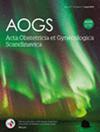Self-collected vaginal HPV samples for long-term non-attendees in the Swedish organized cervical cancer screening program
Abstract
Introduction
Most cervical cancer cases in Sweden are diagnosed among women who have failed to attend screening. The objective of this study was to analyze the effectiveness of offering vaginal HPV (human papillomavirus) self-samples to long-term non-attendees as a routine in this screening program, in which non-attendees had already been the targets of several interventions.
Material and Methods
Register data from the organized cervical screening program were used in this population-based study. From January 2016 to December 2019, 33 881 high-risk (hr-) HPV self-sample kits were sent to the homes of long-term screening non-attendees (≥7 years without a registered screening test), aged between 29 and 64 years, in Region Västra Götaland, Sweden. All samples returned to the laboratory were analyzed with the Cobas HPV DNA assay (Roche) for HPV16, HPV18, and for 12 other hr-HPV types. HPV-positive women were referred for colposcopy. Compliance and results of follow-up were assessed 12 months after HPV analysis. Descriptive statistics, trend analysis, and risk ratios were used to compare outcomes across groups.
Results
The median age of invited women was 49 years; 35% had not been screened before. The response rate was 19.4% (6582/33881). The HPV prevalence was 12.0% (788/6582), and 80.2% of HPV-positive women attended follow-up. Women with no previous cervical sample had a lower response rate: 15.7% (RR (Risk ratio) 0.73 (95% CI (Confidence interval) 0.70–0.77)). They also had lower attendance in follow-up when HPV-positive (71.6% RR 0.86 (CI 0.78–0.94)), compared with women who had previous samples. The proportions of high-grade histopathology (HSIL+) among followed-up women were 31.3% for HPV16, 15.2% for HPV18, and 8.8% for HPVnon-16/18. Nine cervical cancer cases were found among 6582 women, corresponding to a rate of 137 cases per 100,000 women.
Conclusions
Vaginal HPV self-samples increased cervical screening attendance by almost one-fifth among non-attendees who had previously resisted several invitations and interventions. Biopsied women positive for HPV16 or HPV18 had a high prevalence of HSIL or cervical cancer, which strongly supports direct referral to colposcopy. Long-term non-attendees have an exceptionally high risk of cervical cancer and should receive special attention.


 求助内容:
求助内容: 应助结果提醒方式:
应助结果提醒方式:


